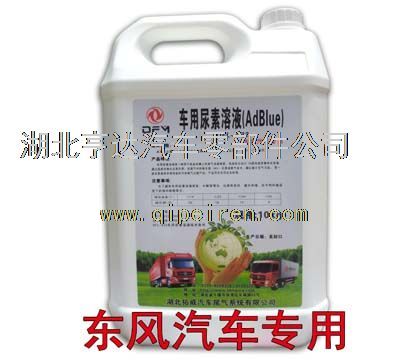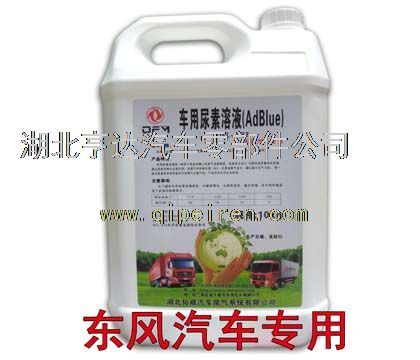Country four emission standard diesel vehicle SCR system tail gas purification AdBlue urea add blue liquid /DFL-A32/ Dongfeng commercial Che Zhengzong urea solution
- Parts number:
- DFL-A32
- model:
- DFL-A32
- brand:
- DFL-A32
- Product Details
- Company Profile
Attribute
Quick Details
Applicable coincidence National IV emission standards for cars with diesel engines, trucks, buses, bus & amp; nbsp; 0719-8318000& nbsp; /13797852692 (AdBlue urea solution is not contain any other additives high pure urea and water together in the preparation of the solution, the urea content in the solution was 32.5% (mass fraction). At home and abroad of heavy-duty diesel engine manufacturers most of the SCR (selective catalytic reduction) technology to meet the requirements of Euro IV and Euro V emission standards for motor vehicles. Vehicles with SCR technology must be added to the urea solution as a catalytic reducing agent, so that the vehicle emission standards. & lt; br /> & amp; nbsp; & amp; nbsp; & amp; nbsp; diesel engine exhaust treatment liquid (commonly known as: Automotive urea, urea, automobile environmental protection urea), in China and Europe called AdBlue and in the Americas that def, in Brazil said ARLA32. AdBlue is composed of components as the 32.5% high pure urea and 67.5% of deionized water of high purity transparent liquid, a faint smell of ammonia. If the spill, moisture evaporation and crystallization. With SCR (car using selective catalytic reduction exhaust after treatment) systems for cars, trucks, buses and heavy non road use diesel engine vehicles for AdBlue is SCR technology must use of consumables, and SCR catalyst together diesel engine emissions of harmful nitrogen oxides into harmless water vapor and nitrogen. The main components of the SCR system include the catalyst, the AdBlue injection device, the AdBlue container and the AdBlue dose controller. Almost all European, American and Asia, including China's heavy truck manufacturers also for vehicles equipped with selective catalytic reduction system and with AdBlue solution, in order to achieve new nitrogen oxide emission standards (such as Euro IV and Euro V) AdBlue and SCR Technology under the joint action to optimize engine performance and fuel consumption, reduce diesel fuel consumption can be as high as 6%, significantly reducing the cost. The average consumption of AdBlue is 5% of the average diesel consumption, which is about 1.5 liters per 100 km of highway driving. AdBlue can only be used in the configuration of the SCR system engine combination, because it is neither a fuel, nor a fuel additive. AdBlue performs compliance with ISO22241, DIN70070 and CEFIC standards to ensure effective operation of the SCR system. AdBlue no harm to the environment, and classified as the lowest risk of the transport of liquid. & lt; br /> & amp; nbsp; & amp; nbsp; & amp; nbsp; car with urea solution development background and use & lt; br /> & amp; nbsp; & amp; nbsp; & amp; nbsp; diesel engine to its high compression ratio is higher than the gasoline engine fuel efficiency, because it has good fuel economy, power performance, durability and widely used in passenger cars. HC, CO and CO2 emissions of diesel vehicles are lower than those of gasoline vehicles, and can be used as the best platform for new energy sources such as bio diesel, so the prospect of diesel vehicles is very good. But NOx (nitrogen oxide) and PM (particulate matter) of diesel vehicles are much higher than gasoline vehicles, and can not be used as gasoline vehicles to use the three effect catalyst to achieve the National IV emission, restricting the development of diesel engines. NOx toxic photochemical smog formation and has a corrosive effect of simulated acid rain, sulfur and nitrogen oxides is the main substances that cause acid rain, the acid rain prevention and control of the situation is grim, and nitrogen oxides is focus on the prevention and control of this stage. & nbsp; nbsp; & nbsp; & nbsp; & nbsp; < /> br; & nbsp;; & nbsp;; &; nbsp; & PM; (particulate matter) has great harm to human respiratory system, can cause chronic lung disease or cancer. The PM component is mainly composed of three parts, which are solid carbon smoke, soluble organic matter and sulfate. The soluble organic matter in the discharged particles has a mutagenic effect, and more than 90% of them are carcinogenic substances. In addition, PM can also lead to chronic lung disease in the human body. Due to the emission of diesel engine particles smaller particle size, the statistical data show that 90% (mass percent) of these particles is less than l m, the particles are suspended in the air retention time is long, thus increasing the opportunities for human exposure, also increased the particles in the atmosphere in the opportunity to other chemical reaction. Fine particles is the main cause of haze, due to motor vehicle ownership in the rapid growth, resulting in a rapid increase in motor vehicle emissions, air PM2.5 in the fine particulate accumulation is more and more, resulting in more frequent haze weather. Therefore, NOx and particulate emissions of diesel engine can not underestimate the human health and the atmospheric environment, which limits the development of diesel engine. All countries in the world are committed to reducing the diesel engine NOx and PM emissions research, the way to improve the quality of fuel, the implementation of the internal purification technology and tail gas treatment technology. But a large number of experimental studies] that only rely on machine purification technology and reduce NOx and PM emissions to meet the emission regulations have become more and more difficult, and lead to production and use costs increased significantly. So it is the future development direction of the diesel engine to control the emission of the harmful substances of the diesel engine by the diesel engine internal purification treatment at the same time to assist with the tail gas treatment technology. < br /> & nbsp; & nbsp; & nbsp; according to the experience in the development of automobile industry in developed countries, there are two main exhaust postprocessing techniques: one is the EGR+DPF/DOC (exhaust gas recirculation system + pdpf / oxidation catalytic converter) route, first through reducing exhaust gas recirculation production in the combustion process of NOx, and then set the trap set by using EGR technology and a slight increase in the particle by particle capture, while the use of oxidation catalytic converter periodic regeneration DPF; second is to optimize the combustion +SCR route, which is the first by optimizing the combustion to reduce emissions of particulate matter, while allowing the production of NOx is increase, and then through the selective catalytic reduction technology to reduce NOx emissions generated by combustion optimization, so as to achieve the effect of PM and NOx decreased at the same time. < /> br; & nbsp
- Related Searches:
- oil products
- bearing
- oil seal
- seal
- paint
- tools
- bushing
- pipes
- fastener
- standard parts
- plastic parts
- rough casting
- other general parts
- hydraulic parts
- You may also be interested in:
- Dongfeng Behr intercooler radiator assembly (DBTS) Hubei Hengda Beijing Great Automotive Components Company Limited national supplier
- Dongfeng Behr radiator intercooler (DBTS) Hubei Hengda Beijing Great Automotive Components Company Limited agents
- Dongfeng Behr radiator assembly
- 8JS130T series transmission
- Clutch housing
- Dongfeng Bei Erzhong cooler
- Dongfeng Behr radiator intercooler Hubei Hengda Beijing Great Automotive Components Company Limited agents
- Cooling agent DBTs radiator
- Dongfeng Behr radiator intercooler (DBTS) Hubei Hengda Beijing Great Automotive Components Company Limited national supplier
- Dongfeng Dongfeng Behr radiator (DBTS) Erzhong Pui cooler Hubei Hengda Beijing Great Automotive Components Company Limited national supplier

